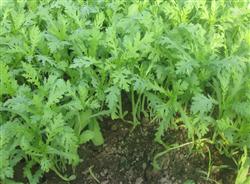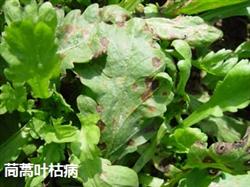Chrysanthemum planting: what is chrysanthemum downy mildew?

What is chrysanthemum downy mildew? Please introduce and guide the methods for the prevention and control of chrysanthemum downy mildew. At the initial stage of the disease, light yellow nearly round or polygonal disease spots are produced on the lower old leaves of the plant, and then the disease gradually spreads to the middle and upper parts of the plant, and the disease spots are yellow-brown in the later stage. in severe cases, many disease spots are linked together, and the leaves are yellow and withered. When the humidity is high, the back of the lesion produces a white mildew layer. The suitable temperature for pathogen infection is 15-17 ℃, which requires more than 85% relative humidity. Autumn day and night temperature difference, frosting time is long, the disease is easy to occur, foggy, rainy weather aggravated. In addition, too dense planting, too large population, excessive application of nitrogen fertilizer, poor ventilation and light transmission or poor drainage will also aggravate the occurrence of the disease. Prevention and control of chrysanthemum downy mildew: comprehensive measures should be taken. Seriously diseased fields can be rotated with non-Compositae vegetables for 2-3 years; planting density should be reasonable to avoid excessive close planting to facilitate ventilation and dampness; re-application of base fertilizer, increase of organic fertilizer, control of nitrogen fertilizer amount, prevention of overgrowth; no flood irrigation, timely drainage after heavy rain. At the initial stage of the disease, 58% nail cream ·manganese-zinc wettable powder can be sprayed, such as 58% nail cream ·manganese-zinc wettable powder solution, or 72.2% propoxur hydrochloric acid salt solution 1000 times, or 64% bad mold ·manganese-zinc wettable powder solution, etc., once every 7-10 days, prevention and treatment for 2-3 times continuously. The fields cultivated in protected areas can be fumigated with chlorothalonil. Click to get more chrysanthemum planting techniques click to get more vegetable planting techniques
- Prev

Cultivation of Artemisia annua: how can Artemisia annua be planted with high yield?
How can planting Artemisia annua L. produce high yield? Please introduce the method of chrysanthemum chrysanthemum with short growth period, few diseases and insect pests, wide cultivation season, very simple management and no need for intermediate ploughing, weeding, topdressing and other measures under the condition of sufficient base fertilizer. Just pay attention to the following five points: 1. It is best to put the seeds in warm water of 35 ℃ ~ 40 ℃ before sowing.
- Next

Chrysanthemum planting: what is the leaf blight of Artemisia annua?
What is chrysanthemum leaf blight? Please introduce the causes and control methods of chrysanthemum leaf blight disease only infect the leaves, the disease spot is round or irregular, the center is light gray, the edge is brown. When the humidity is high, there is a black fog on both the front and back. In the later stage, there were a series of disease spots, which caused the leaves to die. The main cause of leaf blight of Artemisia annua L. is.
Related
- Where is it suitable to grow horseradish in China? it is expected to see the middle altitude horseradish in Alishan.
- How to prevent tomato virus disease reasonably? (Control methods included)
- Many people like to plant towel gourd on the balcony. What are the main points of this method and management?
- What crops can chili peppers be mixed with?
- Fertilization techniques and matters needing attention in Tomato
- What are the grafting techniques for peach seedlings in spring?
- Harm and control methods of root swelling disease of Chinese cabbage
- What are the pests of sweet potatoes? How to prevent and cure it?
- Symptoms, causes and Control methods of navel Rot in Tomato
- The cause of "Cucumber rotten bibcock" in Farmers' planting Cucumber and its Control Plan

